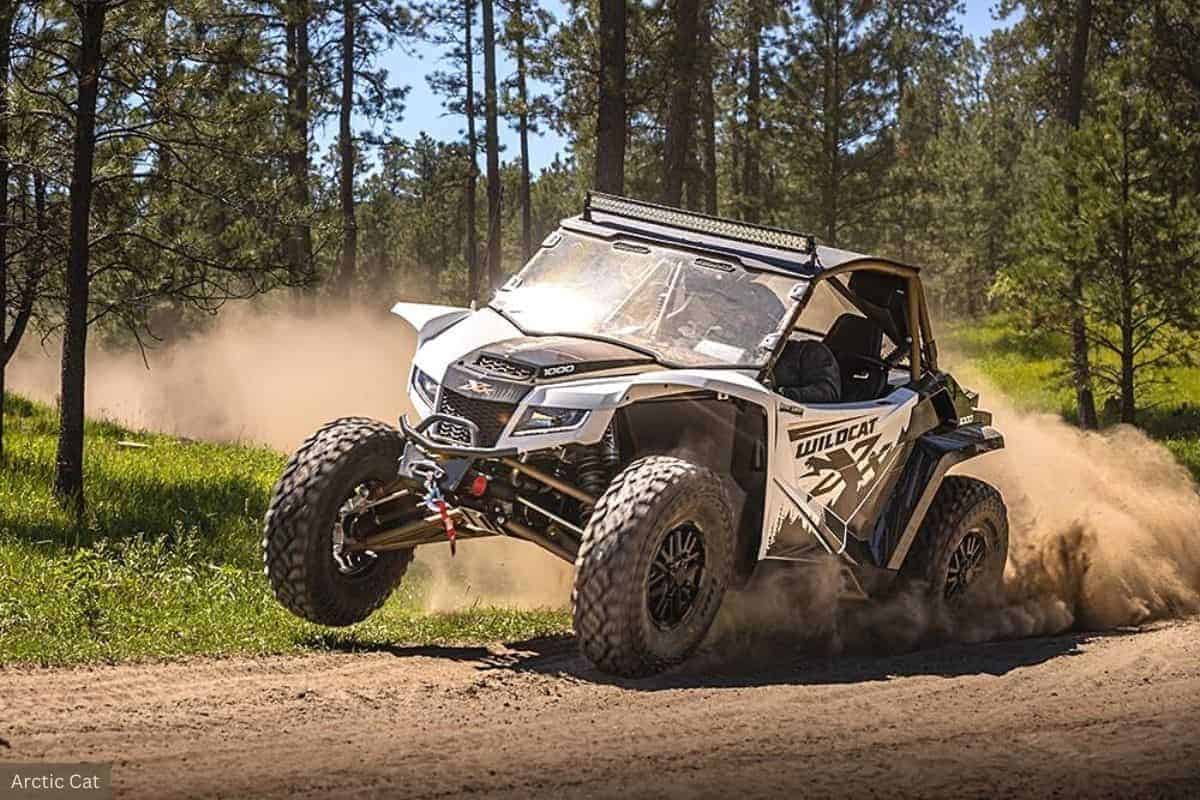UTVs, also known as side-by-sides, have surged in popularity over recent years due to their versatility, off-road capabilities, and utility applications.
However, there is an ongoing debate about whether UTVs can easily roll or flip during sharp turns or sloped terrain.
The fear of rollovers leads some to believe UTVs are too unstable for safe recreational enjoyment.
This idea likely arises from highly publicized rollover accidents involving UTVs operating recklessly at full speed.
However, are modern UTVs simply prone to easy rollovers by design? Or do most incidents involve some level of reckless operation or driver error?
By understanding key reasons why rollovers occur, we can debunk myths about UTVs flipping easily under normal off-road operation.
In this blog post, we’ll cover the engineering behind UTV stability, analyze what typically causes these vehicles to turnover, and provide sensible practices you can follow for preventing side-by-side rollovers.
So, Let’s settle the debate once and for all and look at the truth on whether today’s UTVs live up to their reputation for flipping easily.
Key Takeaways
- UTVs are engineered for stability with features like a wide stance, low center of gravity, and stability control systems. Rollovers mainly occur due to reckless driving or driver errors.
- The most common causes of rollovers are excessive speed, aggressive turns at speed, hill jumping, steep hill climbs, and grades over 45 degrees.
- To prevent rollovers: slow down, slow before turns, limit steep climbs, avoid hill jumping, load cargo centrally and securely, and avoid excessively steep grades.
UTV Design & Stability
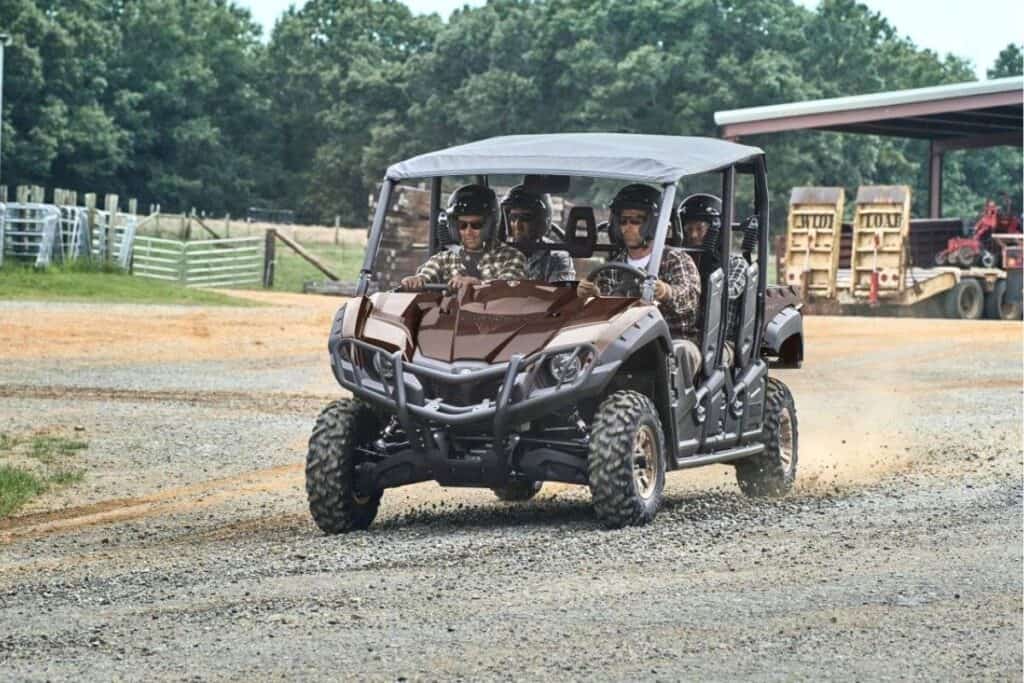
UTVs are specifically engineered for traversing rugged, uneven terrain in off-road environments.
They achieve stability through a wide, long wheelbase paired with a low center of gravity.
This wide, low-sitting stance gives UTVs a sure-footed platform across steep hills, deep ruts, and other obstacles.
Additionally, UTVs have an in-line seating configuration distributing weight appropriately over all four wheels rather than clustered in the rear as with ATVs.
Also, independent suspension systems improve traction and absorb uneven terrain by allowing each wheel to move freely.
In cornering situations, modern UTV stability control programming electronically detects oversteers or understeers. The system can then counteract forces through automated brake adjustments to individual wheels to bring the vehicle back on its intended course.
Other standard safety engineering features in UTVs include:
- ROPS (rollover protective structure) cages reinforced with anti-crush beams to prevent cabin collapse.
- Three-point automotive-style seatbelts for secure restraints.
- Handholds for passengers to grasp during bumpy sections.
So while UTV rollovers can occur under reckless operation on excessive slopes or overly sharp high-speed turns, UTV engineering is aimed at keeping the vehicle planted through typical trail riding environments.
Understanding stability controls and avoiding lateral g-forces beyond design limits is key to preventing rollovers.
Common Causes of UTV Rollovers
While UTVs are engineered for riding stability, rollovers can still occur under certain conditions or driver actions:
- Sharp Turns at High Speeds – Entering turns aggressively at full throttle can create lateral g-forces beyond the UTV’s capability. The abrupt momentum shift throws weight outward, lifting the inside wheels and creating a shift in the center of gravity that causes a rollover.
- Excessively Steep Hills or Sidehilling – UTVs can roll laterally when attempting to climb hills steeper than about 45 degrees depending on conditions and model capabilities. Sidehilling across steep slopes is also a high-risk maneuver.
- Sudden Acceleration or Braking – Quick on-off throttle bursts can break traction unexpectedly, causing sideways skidding where one side can lift. Violent braking can similarly upset stability as weight transfers forward aggressively, lightening rear wheels.
- Improper Cargo Loading – Carrying tall, off-centered loads raises the center of gravity while concentrating excessive weight on one side of the UTV. This multiplies the chances of lateral rollovers during evasive maneuvers or side-hilling.
As you can see, side-by-side rollovers can typically be traced back to driver errors or reckless operation.
Driver Errors & Reckless Operation That Can Lead to Rollovers & Injury… Basically What Not to Do
UTVs themselves do not easily roll over when operated safely, as most incidents and injuries are caused by driver error or reckless operation, which exceeds the vehicle’s capability.
So to help keep you and all your passengers safe below we’ve highlighted the most common mistakes riders make, that lead to flips, rollovers, and injuries.
Excessive Speed
Approaching rough sections of trail or obstacles like rocks, deep ruts, or steep slopes at too high a rate of speed is a primary cause of loss-of-control and rollover accidents in UTVs.
Failing to slow down appropriately as trail conditions change or obstacles appear can easily overload the vehicle’s stability systems.
For example, entering a winding wooded section or rocky, uneven terrain at wide open throttle risks upsetting the UTV through rapid unintended steering or suspension inputs.
Similarly, cresting a hill at top speed resulting in unexpected drop-offs or lateral terrain shifts has led to countless rollovers and flips.
Excessive speed also reduces reaction times necessary to counteract instability incidents.
Small terrain inputs requiring minor steering adjustments at 25 mph could spell disaster at 60 mph.
Slower paces expand drivers’ sight lines for responding to risks smoothly when they emerge without abrupt turns or braking, which can lead to flipping over.
Attempting Excessively Steep Climbs
Misjudging the steepness of uphill slopes and attempting climbs beyond a UTV’s center of gravity is another major mistake that contributes to many rollovers.
Even modern stability controls cannot compensate for some ill-advised steep hill or rock climb attempts.
The angle at which the vehicle begins tipping sideways or backward varies by model and conditions.
Generally, however, climbing or traversing slopes steeper than 45 degrees will exceed most UTV’s capability, putting the machine at risk of tipping or rollover.
Attempting these climbs on loose surfaces like gravel or mud only adds to the danger and risk.
Also, cresting steep hilltops at full speed only to be met with an immediate drop-off on the other side is another common scenario for end-overs, where the side-by-side flips end over end multiple times.
The abrupt drop shifts weight forward dynamically, throwing overall vehicle balance beyond the point of no return.
In addition to the terrain, ensuring adequate traction and throttle modulation is key during climbs and off-roading.
Spinning tires wildly or abrupt power bursts can further unsettle vehicles teetering near the edge of stability limits.
Smooth and progressive throttle inputs enhance safety margins in otherwise precarious climbs or terrain.
Not Using Restraint Systems
Failure to use the factory-installed three-point seatbelt restraints while operating or riding in UTVs dramatically increases the chances of severe injury or death in a rollover event.
Yet many continue driving unrestrained, whether for perceived freedom of movement, physical discomfort, or simple complacency.
This decision, however, can prove catastrophic.
According to the United States Consumer Product Safety Commission, “The dangers of riding OHVs are real and include overturning, collisions and occupant ejection. CPSC’s latest data show an annual average of more than 700 deaths and an estimated 100,000 emergency department-treated injuries involving OHVs.”
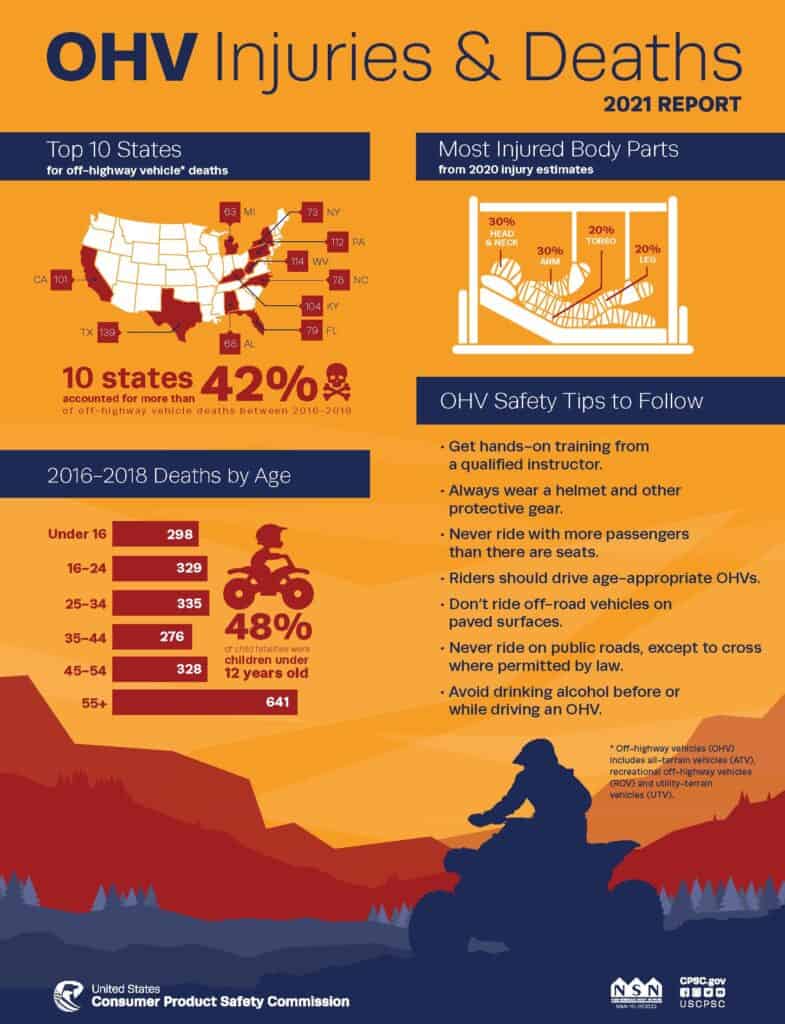
In a typical rollover, an unrestrained driver or passenger is immediately dislodged as the vehicle tips and begins rolling. Occupants become rag dolls to physics, thrown violently about against cage bars, gear shifts, center consoles, and other interior surfaces with immense force.
Body regions like the head, neck, and spine absorb the brunt of impacts as victims are battered inside the tumbling cage. Such trauma frequently leads to disabling or fatal injuries through impacts alone, not to mention increased ejection risk.
Meanwhile, properly belted occupants remain firmly secured in their seats through the entire rollover sequence.
Safety restraints lock firmly to protect the body’s vulnerable areas while the external cage bears the brunt of collisions.
This greatly minimizes injury likelihood compared to horrifying alternatives.
Overloading Cargo Areas
Exceeding designated load capacities or incorrectly distributing cargo weight in UTVs hands-down increases risks of rollovers.
Utility vehicles have defined limits for overall weight based on chassis dynamics.
Yet many unwittingly overload off-road vehicles beyond stability thresholds, especially with towering cargo.
Likewise, lopsided left-to-right loads send more weight to the heavier side.
This effectively shifts the center of gravity enough that relatively minor tilting or suspension inputs can tip the balance point, careening vehicles over.
Even if left to right weight isn’t an issue though, concentrating weight too far rearward risks end-over dynamics.
Safe Practices to Follow to Prevent UTV Rollovers
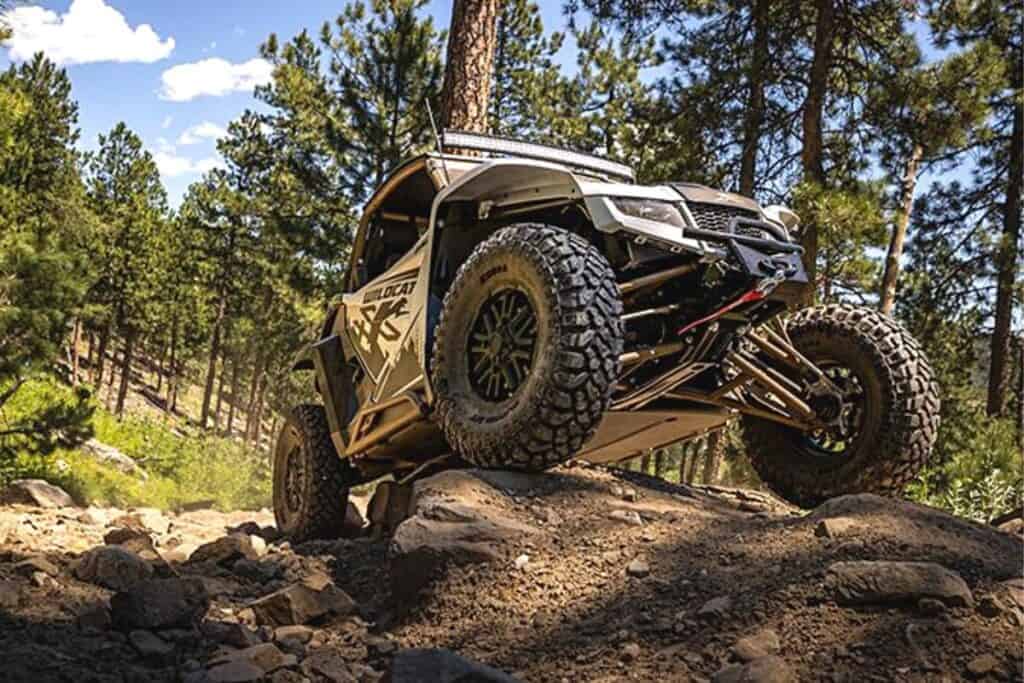
Following common-sense operating protocols neutralizes most hazards that can lead to UTV rollovers in off-roading adventures.
Below are some of the most important safety rules to follow when driving a UTV to prevent flips, rollovers, and accidents.
- Slow Down Before Turns – Braking proactively before corner entry allows tighter turns at reduced speeds without lateral g-forces exceeding stability limits. Traction also improves at slower velocities. Apply light to moderate throttle through the turn to remain in control.
- Limit Steep Hill Climbs – Ascending any extremely steep or loose-surface grades risks traction loss and lateral tip-over. Limit climbs to no more than 30 40-degree slopes based on conditions. ((You can check the hill pitch before climbing using smartphone apps like Google’s Clinometer.))
- Load Cargo Properly – Keep loads low-centered and balanced without exceeding vehicle weight capacity. Secure items so they don’t shift and avoid tall cargo. Improper loading is a huge rollover contributor.
- Use Restraint Systems – Always buckle factory 3-point belts snugly across hips and shoulders before operating. Unrestrained occupants often are ejected and suffer much greater injury during rollovers.
- Avoid Reckless Driving – Driving safely at reasonable speeds will go a long way in preventing flips and rollovers as it will allow for ample sight lines and reaction time. Also, avoid sharp turns or over-acceleration that can unsettle chassis balance. Smoothness fosters stability.
Following these common-sense guidelines makes UTV rollovers a rare occurrence rather than an inevitable fate for off-roaders.
Responsibly staying within handling limits provides peace of mind on rugged trails.
Debunking UTV Rollover Myths
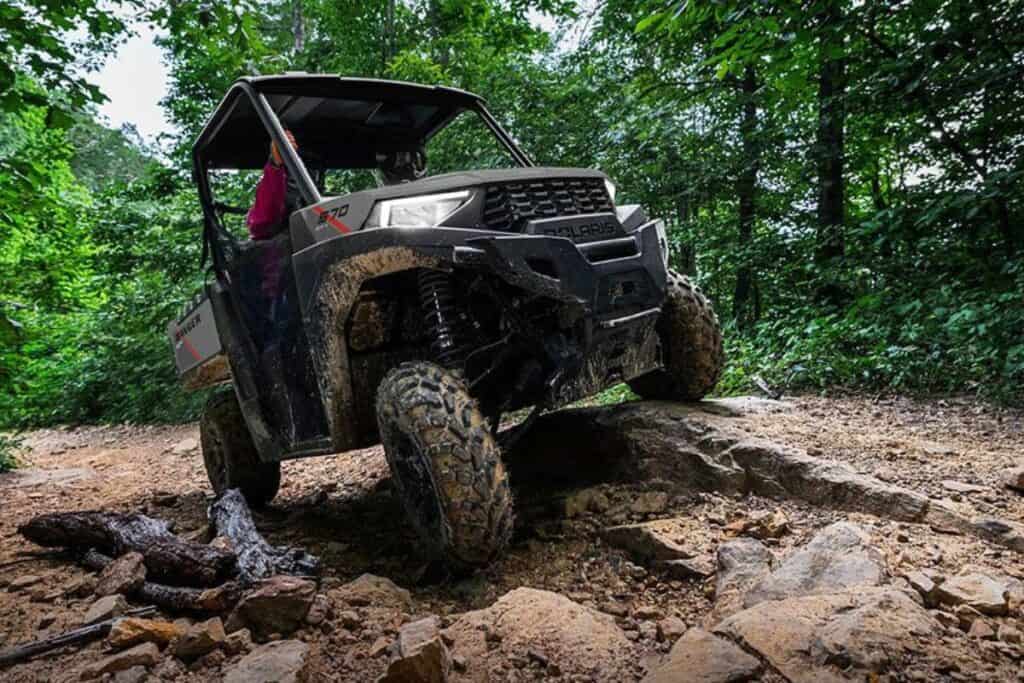
Despite their reputation in some circles for flipping easily, we can debunk a few common myths about UTV rollovers:
UTVs Naturally Roll Due to Narrow Width
Low-Speed Rollovers Show Instability
New Models Don’t Improve Rollover Resistance
UTVs Easily Roll Over Going Up & Down Hills
Four-seat UTV Configurations are more Unstable than Two-seaters
Aftermarket Modifications Like Suspension Lifts Decrease Stability
What To Do If You Start To Tip or Rollover
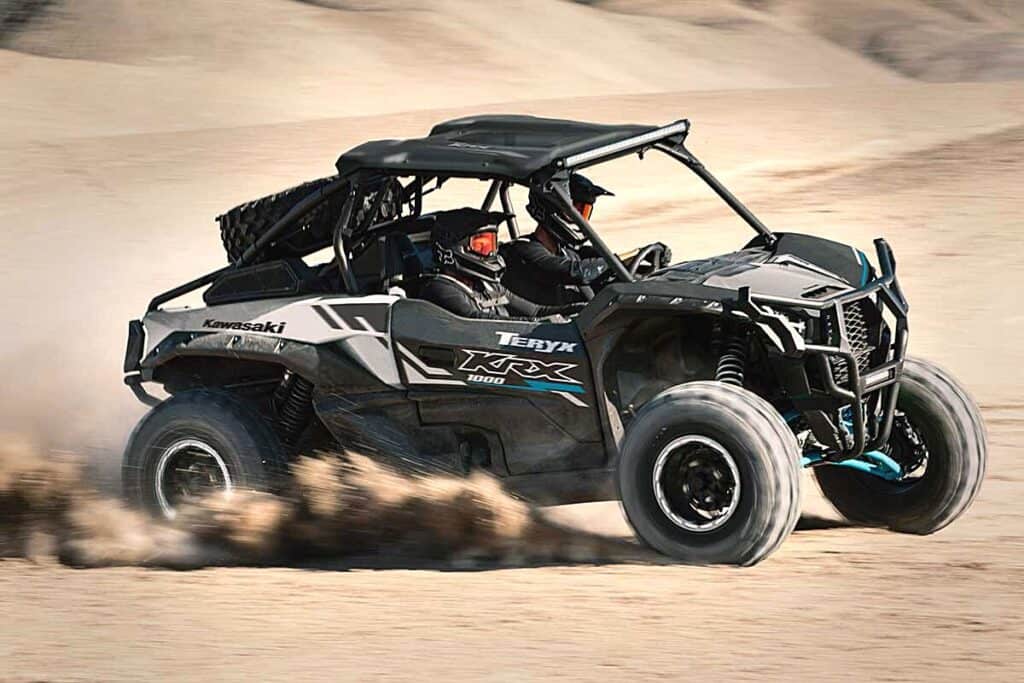
One of the scariest scenarios off-roaders can face is their UTV starting to tip or rollover.
While responsible UTV operation dramatically reduces the chances of a rollover event, it’s important to be prepared just in case, as they can happen.
If you do sense your side-by-side starting to tip or roll, follow these steps to prevent the rollover or at least reduce the likelihood of injury.
Steps to Take to Prevent Rollovers & Reduce Likelihood of Injury
- Release Pedals Smoothly – Chopping power abruptly can further unsettle an already teetering UTV. Also, bouncing between throttle stomps and brake kicks generally overloads stability reserves further inducing flip momentum. Roll off pedals fluidly while allowing chassis balance to settle on its own based on terrain impacts.
- Limit Severe Turning – Resist the urge to yank the steering wheel hard opposite the direction of tilt. While this seems logical, the tire scrub and suspension bounce from this reaction often worsens the teetering motion causing a more violent crash. Apply subtle counter-steering, soft braking, or light acceleration minimally to straighten only if a quick stable recovery seems likely.
- Avoid Overcorrecting Inputs – If the trajectory cannot quickly be halted, allow the UTV to complete the rollover sequence with no strong opposing inputs. Hard lateral throws on the steering wheel or skidding brake applications often intensify crashes.
- Remain Seated with Limbs Inside – Stay buckled in place with hands/arms/legs inside the protective ROPS cage zone. Do not attempt to jump clear as this vastly increases injury risks. Avoid grasping roll bars which may crush hands as the UTV rolls.
- Firmly Grip Doors or Handholds – Rather than flailing arms wildly or trying to exit, firmly grasp and squeeze cabin hand grips or door frames. This secures your body against being thrown about while allowing hands and fingers to avoid being smashed in the chaos.
- Brace for Impacts – Once fully committed to rolling, adopt a protective body posture as the UTV rolls appropriately cover vulnerable skull and spine regions with hands and arms while tucking the head tightly. Keep the neck and head protected against cage, door, and ground collisions in the turmoil to maximize safety.
While harrowing at the moment, keeping composure and avoiding over-corrections gives you the best chances of emerging unscathed.
Additional UTV Resources:
- Are All UTVs 4×4? The Answer Might Suprise You
- Is Your UTV Even Legal? The Ultimate Guide to UTV Titles
- What Size Trailer Will a Side-By-Side Fit on? Find Out Here
Recent Posts
In recent years, off-road enthusiasts have been taking their adventures to the next level by installing UTV underglow lights on their side-by-sides. Which adds a unique visual appeal and improves...
Side by sides, also known as UTVs, are used by a wide range of outdoor enthusiasts from off-roaders to farmers to ranchers, and hunters. As these versatile machines offer a unique blend of...

